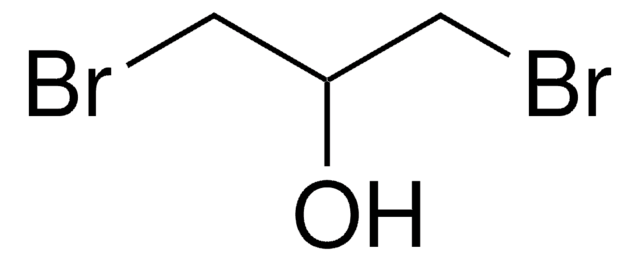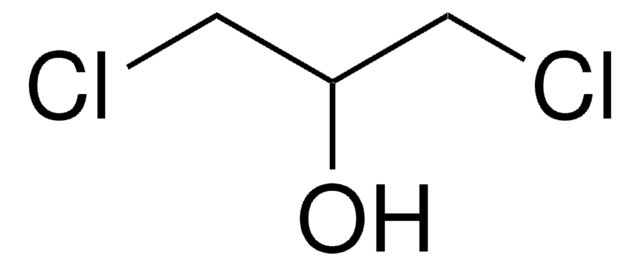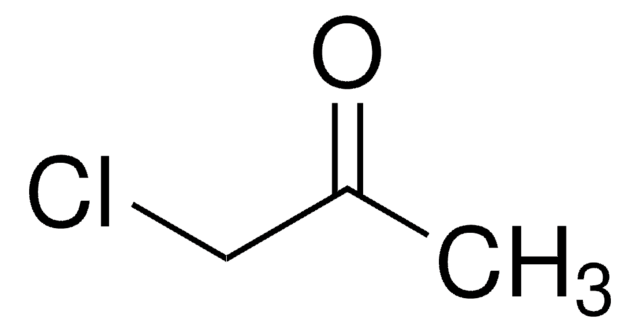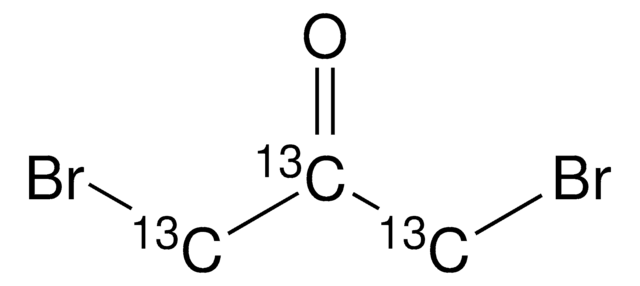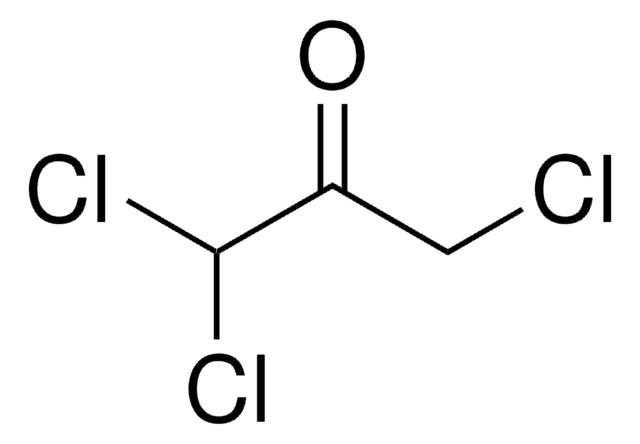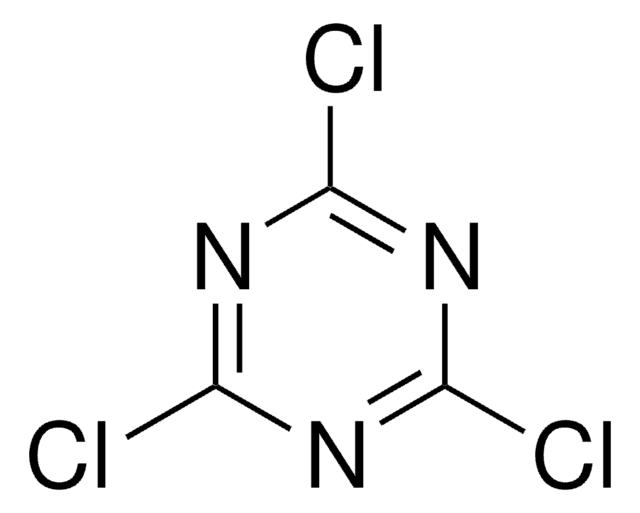About This Item
Polecane produkty
gęstość pary
4.38 (vs air)
ciśnienie pary
<0.1 mmHg ( 20 °C)
Próba
≥95%
Postać
solid
tw
173 °C (lit.)
mp
39-41 °C (lit.)
rozpuszczalność
alcohol: very soluble
diethyl ether: very soluble
water: soluble
gęstość
1.383 g/mL at 25 °C (lit.)
temp. przechowywania
2-8°C
ciąg SMILES
ClCC(=O)CCl
InChI
1S/C3H4Cl2O/c4-1-3(6)2-5/h1-2H2
Klucz InChI
SUNMBRGCANLOEG-UHFFFAOYSA-N
Opis ogólny
1,3-dichloroacetone is a dihaloketone derivative used as a reagent in the synthesis of complex multicyclic peptides.
Zastosowanie
Hasło ostrzegawcze
Danger
Zwroty wskazujące rodzaj zagrożenia
Zwroty wskazujące środki ostrożności
Klasyfikacja zagrożeń
Acute Tox. 1 Inhalation - Acute Tox. 2 Dermal - Acute Tox. 2 Oral - Muta. 2 - Skin Corr. 1B
Kod klasy składowania
6.1A - Combustible acute toxic Cat. 1 and 2 / very toxic hazardous materials
Klasa zagrożenia wodnego (WGK)
WGK 3
Temperatura zapłonu (°F)
Not applicable
Temperatura zapłonu (°C)
Not applicable
Środki ochrony indywidualnej
Eyeshields, Faceshields, Gloves, type P3 (EN 143) respirator cartridges
Certyfikaty analizy (CoA)
Poszukaj Certyfikaty analizy (CoA), wpisując numer partii/serii produktów. Numery serii i partii można znaleźć na etykiecie produktu po słowach „seria” lub „partia”.
Masz już ten produkt?
Dokumenty związane z niedawno zakupionymi produktami zostały zamieszczone w Bibliotece dokumentów.
Nasz zespół naukowców ma doświadczenie we wszystkich obszarach badań, w tym w naukach przyrodniczych, materiałoznawstwie, syntezie chemicznej, chromatografii, analityce i wielu innych dziedzinach.
Skontaktuj się z zespołem ds. pomocy technicznej